Roses are a symbol of romance and passion, but did you know this plant can also be a source of nutrition?
Rose hips are the edible accessory fruit, aka pseudocarp, or “false fruit” of the rose plant.
This means that although they do contain seeds, the flesh contains both the mature ovary and other tissue from the floral structure. False fruits include apples, strawberries, and pineapples.
Botanically speaking, only the seeds found inside the rose hip are “true fruits.” Accessory fruits develop without fertilization of the ovary, where “true fruit,” such as mangoes and grapes develop after a mature ovary is fertilized.
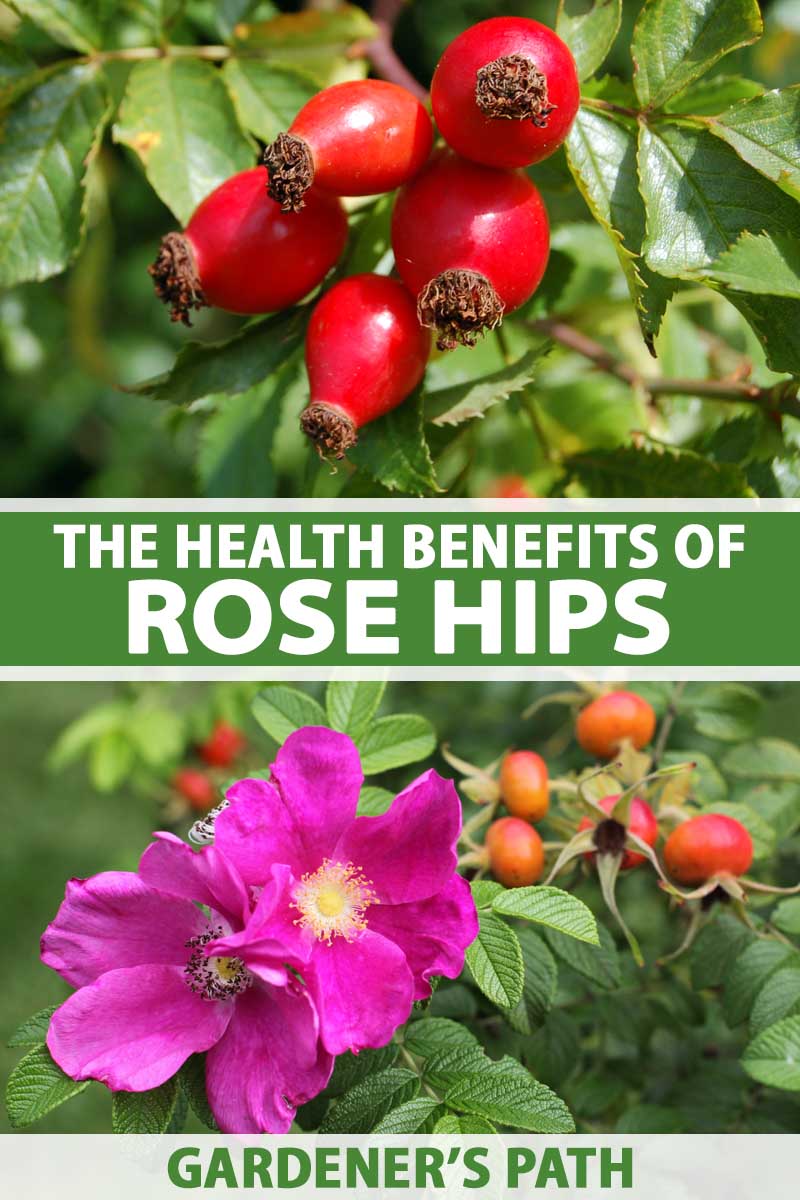
We link to vendors to help you find relevant products. If you buy from one of our links, we may earn a commission.
You may have heard of it in teas, but I’d like to dive a bit deeper to explore what this fruit has to offer from a culinary and nutritional standpoint.
Here’s what we’ll cover:
What You’ll Learn
What Are Rose Hips?
These fruits are typically small red or orange-colored bulbs that develop below the petals of the flower. Certain varieties may produce deeper purple or even black hips.
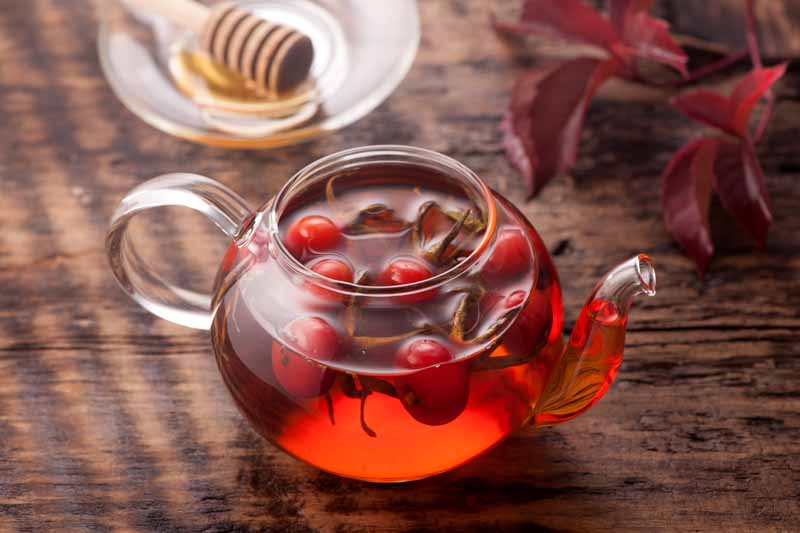
They ripen after the pollinated flowers finish blooming, most often in late summer or early fall.
The fruits can be eaten raw, if the seeds and the hairs surrounding them are removed. The hairs can be irritating to the mucous membrane in your mouth and digestive tract.
The flesh of the fruit has a mild, tangy, slightly floral flavor, and can also used to make jellies, jams, syrups, pie filling, teas, oils, and more.
Nutritional Value
With so many different edible forms, the nutritional properties can vary from product to product.
For example, pie filling made with fresh rose hips will likely retain more nutritional benefit than a more processed jelly or syrup that has been exposed to high temperatures.
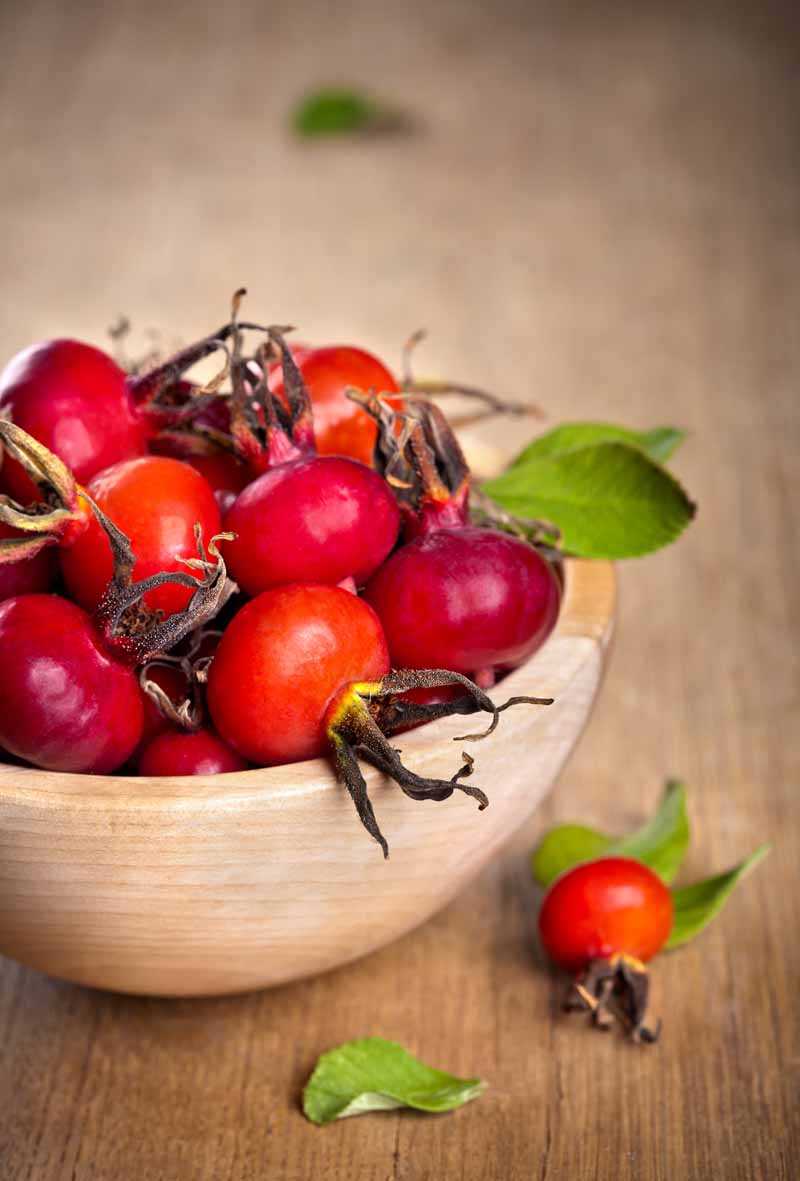
Check the nutrition facts panel on any premade products that you purchase for details. When making your own rose hip products, assume that with more processing, less nutritional value will be retained.
Wild fruits eaten raw provide 45 calories per ounce. This serving size brings 6.7 grams of fiber, 1217 IU vitamin A, and 119 milligrams of vitamin C. That’s over 100 percent of the recommended daily value for both vitamins A and C!
The vitamin A partially comes from beta-carotene, which also contributes to the orange-red hue of the rose hips.
This carotenoid is converted to an active form of vitamin A in the body. It acts as an antioxidant, working to combat free radicals from causing potential harm to our cells.
Vitamin A also plays an important role in maintaining our retinas. This can help to prevent age-related degeneration of the eyes and potentially help to prevent cataracts.
Aside from beta-carotene, the fruits contain the carotenoids lutein and zeaxanthin. These cannot be converted into vitamin A, but they still function as antioxidants.
These carotenoids are taken up in the retina of the eye and help with the absorption of blue light like what comes from our computers, phones, and other digital devices, and prevent it from causing oxidative damage. If you’re prone to bouts of prolonged screen time like I am, consuming rose hips could be beneficial!
Beyond carotenoids, the fruits are vitamin C powerhouses. We surely know that this vitamin supports the immune system, but its usefulness in the body goes beyond that.
Vitamin C also facilitates the growth of collagen, a connective tissue that supports joints, helps with wound healing, and is responsible for skin elasticity.
It also increases the absorption of nonheme iron, the type of iron that is derived from vegetable sources.
A Note of Caution:
Only consume rose hips from plants that have been grown organically, and exercise caution when foraging. Some chemical pesticides and fungicides commonly used on ornamental plants like roses are not recommended for eating and may be unsafe to consume.
Potential Benefits
Rose hips have been used in alternative medicine to treat many ailments, dating back to the times of the ancient Romans. Some of these applications have stood the test of time.

They have an anti-inflammatory effect that has been shown in studies to be similar to that of standard over-the-counter pain medications.
The benefit of using rose hips instead is that they have significantly reduced ulcerogenic properties, meaning they won’t cause as much potential damage to the stomach lining.
Rose hips are not yet proven to be a standard replacement for NSAID drugs, but could be worth asking your doctor about as an alternative option for relieving some of the symptoms of osteoarthritis or rheumatoid arthritis.
Studies done in rats and mice have shown potentially beneficial antidiabetic and anti-obesogenic properties. To prove these claims, more research needs to be conducted in humans.
Recommended Cultivars
With so much healthful potential, you’re probably wondering how you can produce a harvest of tasty and nutritious rose hips from your own garden!
All roses produce hips, but you may not always notice them, particularly if you are diligent about deadheading spent blooms.
Allowing roses to grow naturally without much pruning or deadheading encourages the production of the accessory fruits.
They appear in late summer or early fall, and begin as hard, green, berry-like growths. As they ripen, they turn red-orange or purple, depending on the variety you are growing.
If you’re planting roses with the intent of collecting hips, I recommend ‘Nearly Wild’ or ‘White Rugosa.’
Nearly Wild
‘Nearly Wild’ blooms in a profusion of pink, from early summer to mid to late-fall.
The fragrant flowers and bright red hips grow on a dense, compact shrub, suitable for containers.
You can find plants in #3 containers available at Nature Hills Nursery.
White Rugosa
‘White Rugosa’ has white, fragrant flowers, and produces abundant, one-inch vibrant orange-red fruits.
This variety is drought and salt-tolerant once established, and suitable for growers in USDA Hardiness Zones 2-7.
You can find plants in #3 containers available at Nature Hills Nursery.
It’s Hip to Grow Hips
Growing and using rose hips is a simple way to improve the nutritional value of your diet.
Their high vitamin content and potential anti-inflammatory power prove them to be a beneficial byproduct of a beautiful plant. Every rose may have its thorn, but every rose also has its hip!
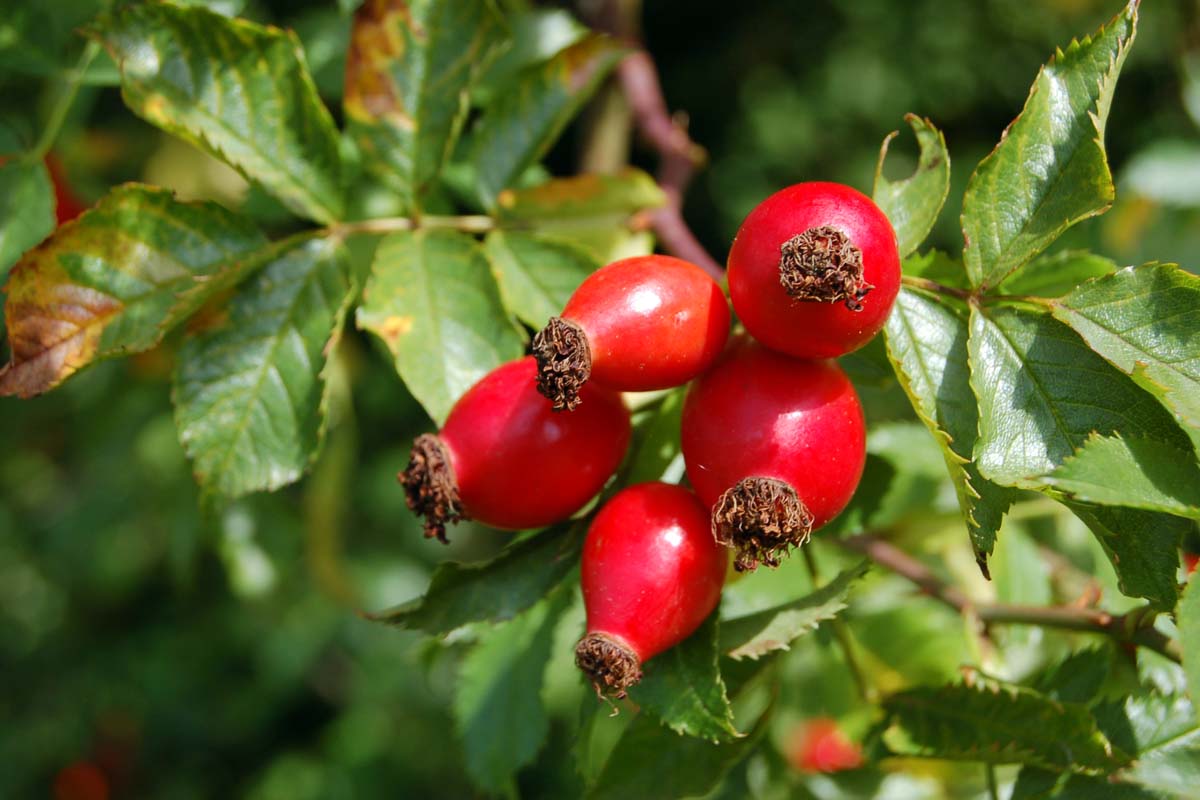
Do you collect rose hips from your plants? Let me know in the comments below, and share your favorite ways to enjoy them!
For more information about plants with potential health benefits and medicinal value, read these articles next:
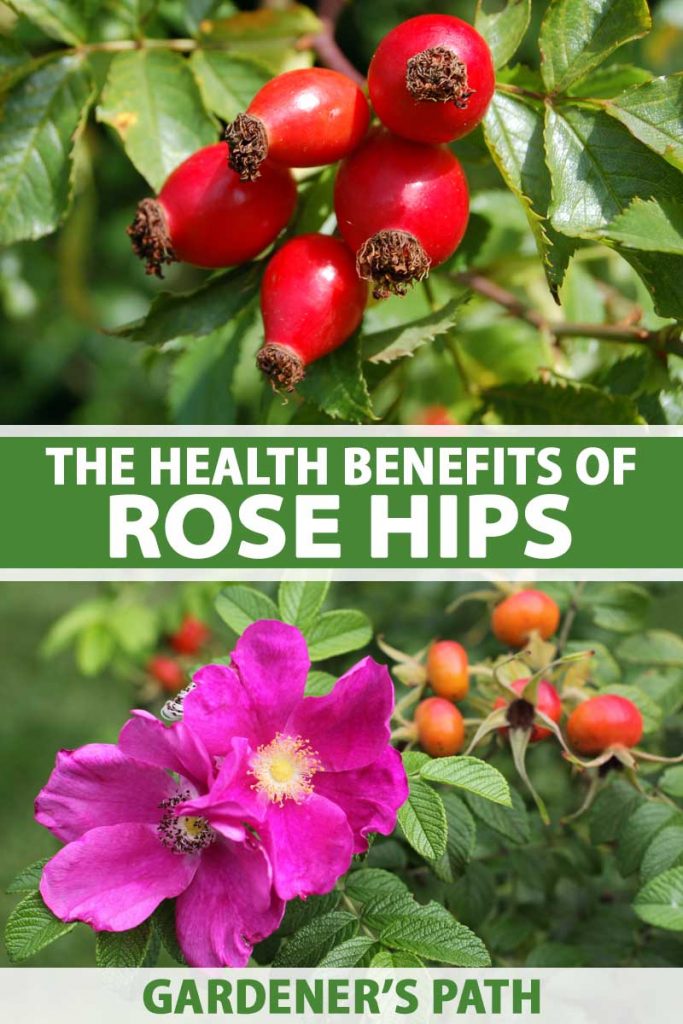





I boil them with water and sugar and strain to make a simple syrup. This can be used over ice cream, to flavor seltzer, etc. and doesn’t require the painstaking separation of the seeds and hairs from the good part.
Hi Liz, that sounds delicious, thank you for sharing!
I just crush them after I dry them and steep in thermos overnight, strain and drink, delicious! Been drinking thru the winter and spring. They grow by the sea and are free to be picked up 🙂